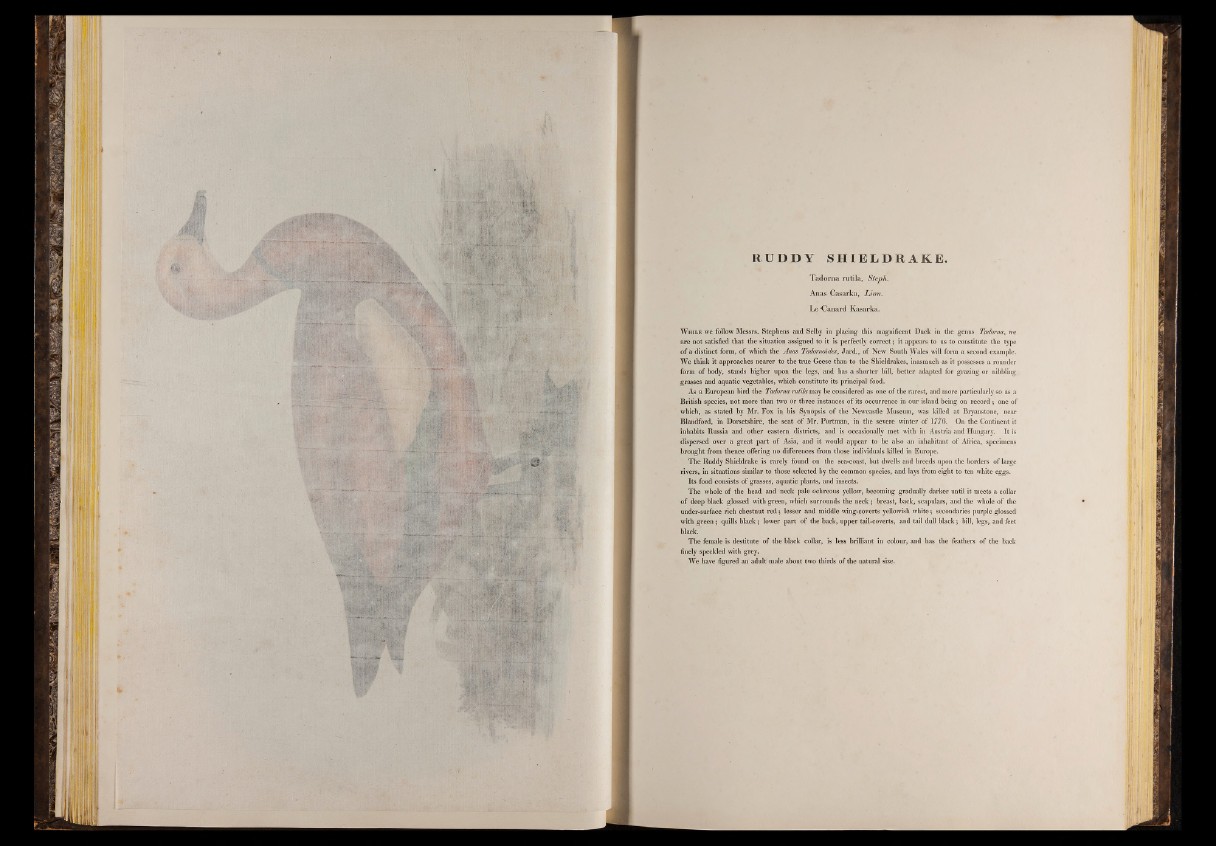
SSSii
« ■
R U D D Y SH I E L D R A K E .
Tadorna rutila, Steph.
Anas Casarka, Linn.
Le Canard Kasarka.
W hile we follow Messrs. Stephens and Selby in placing this magnificent Duck in the genus Tadorna, we
are not satisfied that the situation assigned to it is perfectly correct; it appears to us to constitute the type
of a distinct form, of which the Anas Tadornoides, Jard., of New South Wales will form a second example.
We think it approaches nearer to the true Geese than to the Shieldrakes, inasmuch as it possesses a rounder
form of body, stands higher upon the legs, and has a shorter bill, better adapted for grazing or nibbling
grasses and aquatic vegetables, which constitute its principal food.
As a European bird the Tadorna rutila may be considered as one of the rarest, and more particularly so as a
British species, not more than two or three instances of its occurrence in our island being on record ; one of
which, as stated by Mr. Fox in his Synopsis of the Newcastle Museum, was killed at Bryanstone, near
Blandford, in Dorsetshire, the seat of Mr. Portman, in the severe winter of 1776. On the Continent it
inhabits Russia and other eastern districts, and is occasionally met with in Austria and Hungary. It is
dispersed over a great part of Asia, and it would appear to be also an inhabitant of Africa, specimens
brought from thence offering no differences from those individuals killed in Europe.
The Ruddy Shieldrake is rarely found on the sea-coast, but dwells and breeds upon the borders of large
rivers, in situations similar to those selected by the common species, and lays from eight to ten white eggs.
Its food consists of grasses, aquatic plants, and insects.
The whole of the head and neck pale ochreous yellow, becoming gradually darker until it meets a collar
of deep black glossed with green, which surrounds the neck; breast, back, scapulars, and the whole of the
under-surface rich chestnut red; lesser and middle wing-coverts yellowish white; secondaries purple glossed
with green; quills black; lower part of the back, upper tail-coverts, and tail dull black; bill, legs, and feet
black.
The female is destitute of the black collar, is less brilliant in colour, and has the feathers of the back
finely speckled with grey.
We have figured an adult male about two thirds of the natural size.